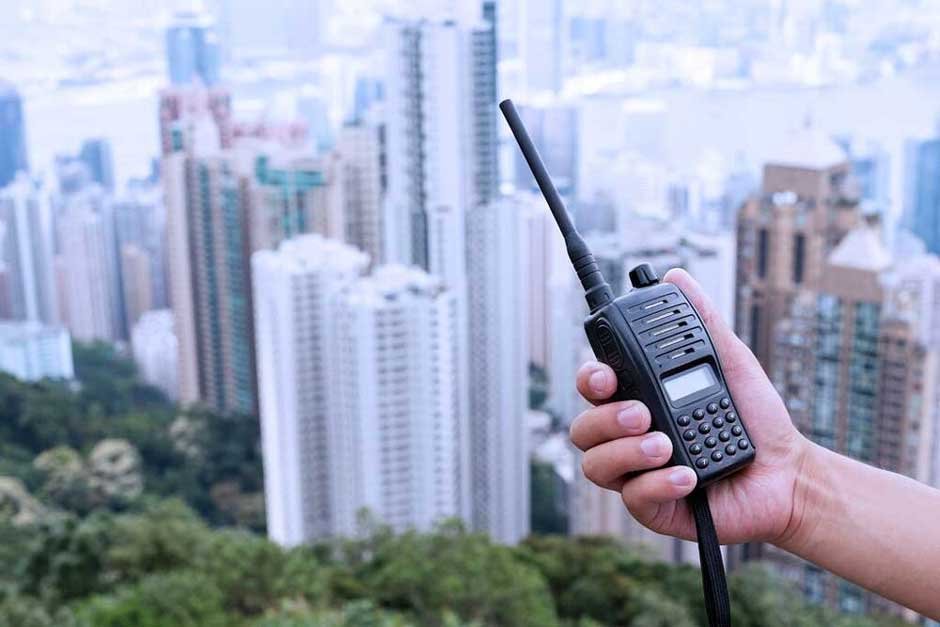In the ever-evolving realm of wireless communication, radio technologies remain the bedrock of connectivity, powering everything from emergency response networks to satellite data links and mobile phone signals. Despite technological advancements, one persistent hurdle continues to affect the performance and reliability of these systems: environmental challenges in radio communication.
This blog delves deep into the types of environmental challenges faced, their effects on radio systems, and the innovative solutions used to overcome them.
Understanding the Environment’s Impact on Radio Communications
Radio communication systems operate by transmitting electromagnetic waves through the atmosphere. However, the Earth’s environment is far from uniform—it’s a dynamic, ever-changing space influenced by natural and man-made elements alike. These variables can distort, delay, absorb, or scatter radio signals, significantly affecting communication quality.
Key Environmental Challenges in Radio Communication
- Atmospheric Conditions
Atmospheric factors like humidity, temperature, and pressure can change the propagation behavior of radio waves. For example, tropospheric ducting—caused by temperature inversions—can allow signals to travel hundreds of miles, far beyond their intended range, leading to interference. - Precipitation and Weather Events
Rain, snow, fog, and thunderstorms pose significant obstacles. Rain fade, particularly in high-frequency bands like Ku and Ka (used in satellite communications), can degrade signal strength or even disrupt service entirely. Lightning generates electromagnetic interference (EMI), adding noise to radio channels. - Terrain and Obstructions
Mountains, buildings, dense forests, and urban structures block or reflect signals. Multipath propagation—where signals bounce off surfaces and arrive at the receiver at different times—causes fading and signal distortion. - Ionospheric Variability
High-frequency (HF) radio signals rely on ionospheric reflection for long-distance transmission. However, solar activity, such as solar flares and geomagnetic storms, can disrupt the ionosphere, causing unpredictable signal behavior or blackouts. - Man-Made Interference
Urban environments are cluttered with devices emitting radio frequency (RF) energy: Wi-Fi routers, cellular towers, microwaves, and industrial machinery. This creates a noisy background that reduces signal-to-noise ratios and increases the likelihood of interference.
Technological Solutions and Mitigation Strategies
While environmental challenges in radio communication are inevitable, engineers and scientists have developed numerous techniques to mitigate their effects. Below are some widely used strategies:
- Diversity Techniques
Diversity schemes enhance reliability by leveraging multiple signal paths or formats:
- Frequency Diversity: Sending the same signal over multiple frequencies to reduce susceptibility to narrowband interference or fading.
- Spatial Diversity: Using multiple antennas at different locations to avoid simultaneous signal degradation.
- Polarization Diversity: Employing antennas with different polarizations (e.g., vertical and horizontal) to exploit the independence of signal behavior in different orientations.
- Adaptive Modulation and Coding (AMC)
AMC dynamically adjusts modulation schemes and error-correcting codes based on real-time channel conditions. In poor conditions, more robust but slower schemes are used, ensuring a minimum quality of service. In clear conditions, higher data rates are achievable.
- Automatic Gain Control (AGC) and Noise Filtering
AGC systems adjust the receiver’s sensitivity in response to fluctuating signal strength. Combined with digital signal processing (DSP) filters, these systems can isolate desired signals and minimize the impact of noise and interference.
- Use of Repeaters and Relays
In obstructed environments like mountainous areas or urban canyons, strategically placed repeaters extend coverage by amplifying and retransmitting signals. This helps bridge dead zones and counteract terrain-related signal losses.
- MIMO and Beamforming Technologies
Multiple-Input Multiple-Output (MIMO) systems use multiple antennas to transmit and receive parallel data streams. When combined with beamforming—focusing the signal in a specific direction—these technologies significantly enhance signal resilience against environmental challenges.
Case Studies: Real-World Applications
Emergency Communications in Disaster Zones
During natural disasters like hurricanes or earthquakes, infrastructure is often compromised, and weather conditions are harsh. Temporary radio networks using mobile repeaters and satellite uplinks help ensure communication remains possible. Technologies like software-defined radios (SDRs) allow flexible adaptation to varying environments.
Military Operations in Remote Terrains
Military radios often encounter harsh terrains—deserts, jungles, and mountains—where environmental interference is high. Techniques such as frequency hopping spread spectrum (FHSS) and cognitive radios that detect and adapt to interference are employed to maintain secure, uninterrupted communication.
Maritime and Aviation Communication
Ships and aircraft operate in highly variable atmospheric and ionospheric conditions. High-frequency radios and satellite communications use predictive algorithms to adapt to real-time changes, ensuring continuous connectivity across oceans and continents.
Emerging Trends and Future Outlook
The future of radio communication lies in integrating advanced technologies to counter environmental disruptions:
- AI-Driven Spectrum Management
Artificial Intelligence (AI) systems can predict environmental interference based on historical and real-time data. These systems automatically adjust frequencies, modulation schemes, and power levels to maintain optimal communication.
- Software-Defined Radios (SDRs)
SDRs enable dynamic reconfiguration of radio protocols and parameters without changing hardware. In response to changing environmental conditions, SDRs can shift frequency bands, alter power output, or implement noise mitigation strategies in real time.
- Hybrid Networks
Combining terrestrial, satellite, and mesh networking into a hybrid communication infrastructure offers redundancy. When environmental factors compromise one channel, others can maintain the connection.
- Space-Based Relay Systems
Low Earth Orbit (LEO) satellite constellations like Starlink are reducing latency and increasing bandwidth, even in harsh weather conditions. These systems offer promising solutions for regions affected by terrain and weather-based disruptions.
Best Practices for Engineers and Operators
Addressing environmental challenges in radio communication requires proactive planning and ongoing adaptation. Here are a few best practices:
- Site Surveys and RF Mapping: Conduct thorough environmental assessments before deployment to identify potential obstructions or interference sources.
- Redundancy and Failover Planning: Always include backup links or channels to switch to in case of signal degradation.
- Environmental Monitoring: Use real-time weather and solar activity data to anticipate potential disruptions and preemptively adjust systems.
- Training and Simulation: Regularly train personnel using environmental simulation tools to prepare for variable conditions and improve system resilience.
Conclusion
The battle against environmental challenges in radio communication is not about elimination—it’s about adaptation. While weather, terrain, and interference will always pose threats to signal integrity, continuous innovation in engineering, signal processing, and adaptive technologies offers robust solutions to keep our world connected.
From emergency response teams in storm-ravaged regions to autonomous drones navigating remote landscapes, overcoming these challenges isn’t just a technical requirement—it’s a critical enabler of modern communication.
As we advance toward more interconnected systems—from 5G and IoT to interplanetary communication—the importance of mastering environmental dynamics in radio communication will only grow. By embracing flexible, intelligent, and layered strategies, we can build resilient systems that thrive, even in the most adverse conditions.




